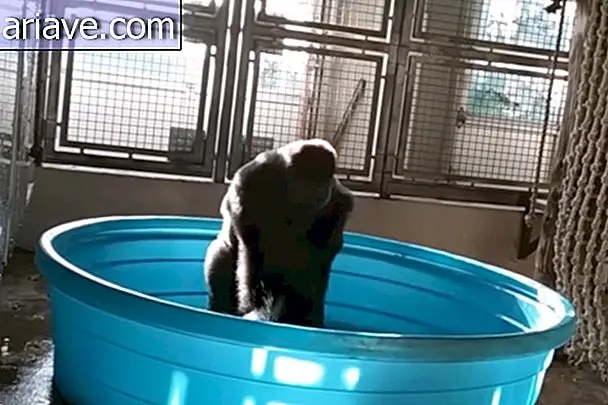5 things you may not know about ebola
In recent weeks, one of the most talked about topics has been the Ebola epidemic in Africa and the possibility of it spreading across the planet. Luckily we already know a lot of things about the virus: it is transmitted through direct contact with blood and other body fluids - such as urine, tears, semen, saliva, sweat and feces - that the incubation period is 2 21 days and the mortality rate can reach 90%.
We also know that some of its symptoms are similar to those of the flu - such as fever, headache, weakness, chills and sore throat - and that there is no specific drug to treat the disease. But despite so much information about ebola, there are some things about ebola that not everyone knows about. The folks at mental_floss put together a lot of them in one article, and we at Mega Curioso have selected 5 for you to check out:
1 - He's kind of a zombie

As you may recall from biology classes, there are some criteria for something to be considered a living organism - such as being able to feed and reproduce on its own, for example - and viruses do not meet these requirements. As such, ebola, although able to reproduce aggressively in the host's body, needs to invade its cells to do this and survive.
In addition, another criterion that defines a living organism is its ability to metabolize its own energy, something that ebola cannot do on its own either. All of this makes him a kind of zombie, an agent who is neither alive nor dead, but who has a genome, an amazing ability to replicate and bad intentions.
2 - Military Operation

Scientists are discovering new features about how ebola behaves after it "invades" the host organism, and an interesting analogy is to imagine the course of infection as a military operation. One of the main factors of its effectiveness is its stealth - how the virus mobilizes the victim's immune system, as if it were an air force that counteracts the opponent's air defense before the bombing begins.
As they explained, ebola interferes with the action of interferon, a protein produced by the immune system in response to infection by pathogens such as bacteria and viruses. Interferon acts on receptors on the surface of infected cells, commanding different signaling pathways that activate various antiviral proteins that prevent pathogens from replicating.
In other words, ebola obstructs the activity of the substance responsible for "warning" the cells that the organism must be defended. And without that communication, the poor things can't defend themselves or ask for help. Then ebola invades cells and uses them to produce more viruses, which in turn invade other cells and continue the attack. After that, in the next step, the host begins to bleed.
3 - No one knows for sure how he started infecting humans

Humans are not the natural hosts of ebola, but rather - as epidemiologists believe - fruit bats, which can transmit the virus to other mammals such as primates, small rodents and even other bats. No one is sure how people became infected with Ebola, and one of the most widely accepted assumptions is that monkeys were the "bridge."
It is quite common for primate meat - like that of bats themselves - to be eaten in Africa, and it seems that hunters became infected with Ebola after hunting animals with the disease, transmitting the virus to relatives and other patients in poor hospitals. prepared.
4 - This is not the first time he appears outside Africa
There are five known species of ebola - Sudan, Taï Floresta (Cote d'Ivoire), Bundibugyo, Zaire and Reston - and, as you may have noticed, they were all named according to the locations in which they were identified. Because the variety "Reston" is named after a city of the same name located in Virginia, USA.
Reston ebolavirus was discovered in Philippine monkeys imported from a US laboratory in 1989. This incident was followed by two other cases - one in Texas and the other in Philadelphia - but luckily no humans were infected. at the time, unlike the transmissions that are taking place outside Africa this time.
5 - You need to work as a CSI to stop the epidemic

Everyone knows that there is still no specific treatment or medicine to treat patients - just experimental drugs and therapies. To stop an epidemic, health professionals must work as true detectives to track all people who have come in contact with patients. And that can result in a real hunt.
So after isolating and talking with the victim, the next step is to find all the people who have had contact with this individual and put everyone in isolation for 21 days. After this period, anyone who does not exhibit any symptoms is released. However, if someone has a confirmed diagnosis, then the hunt repeats and if health professionals do not find all infected, the epidemic continues.












